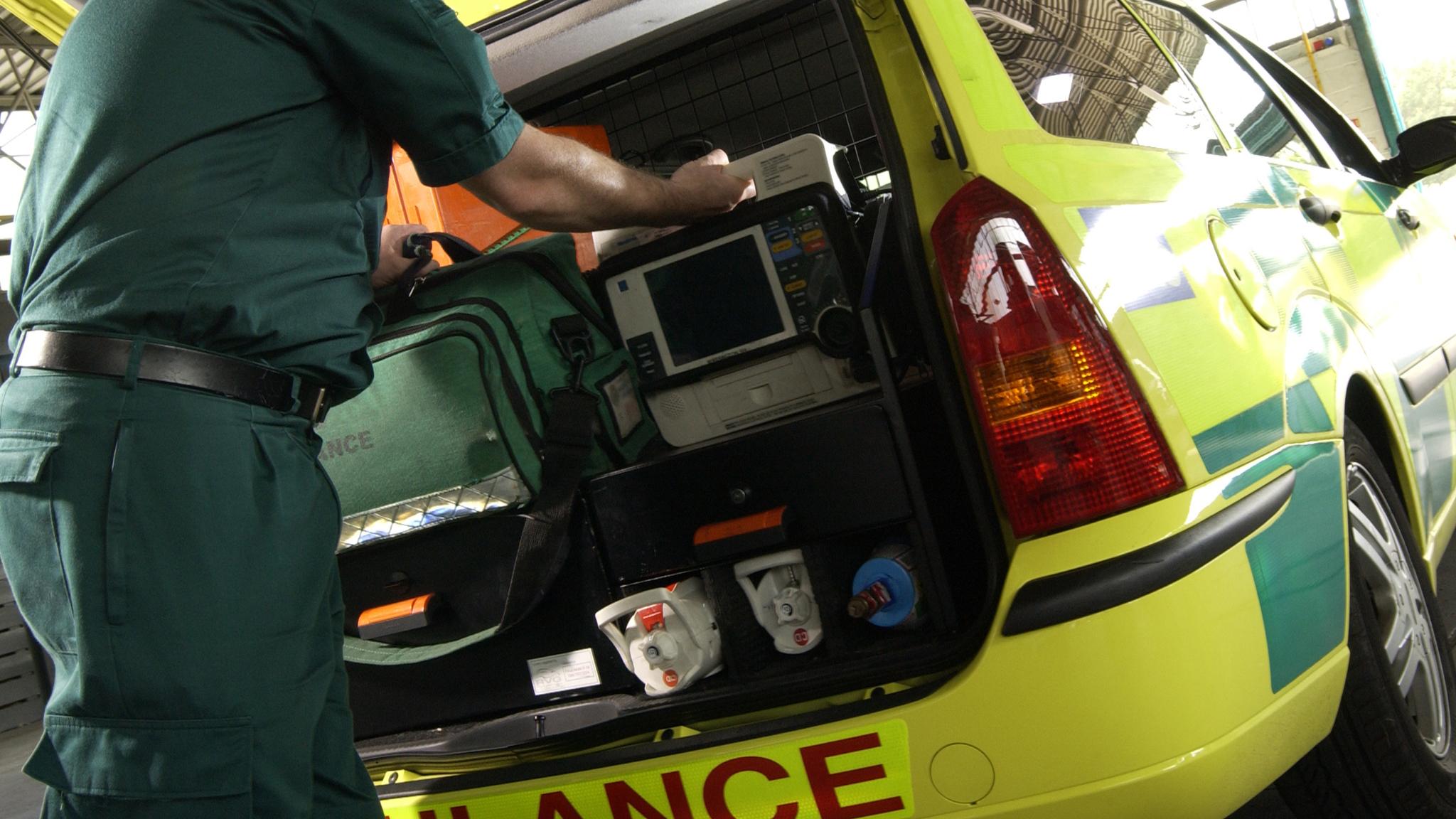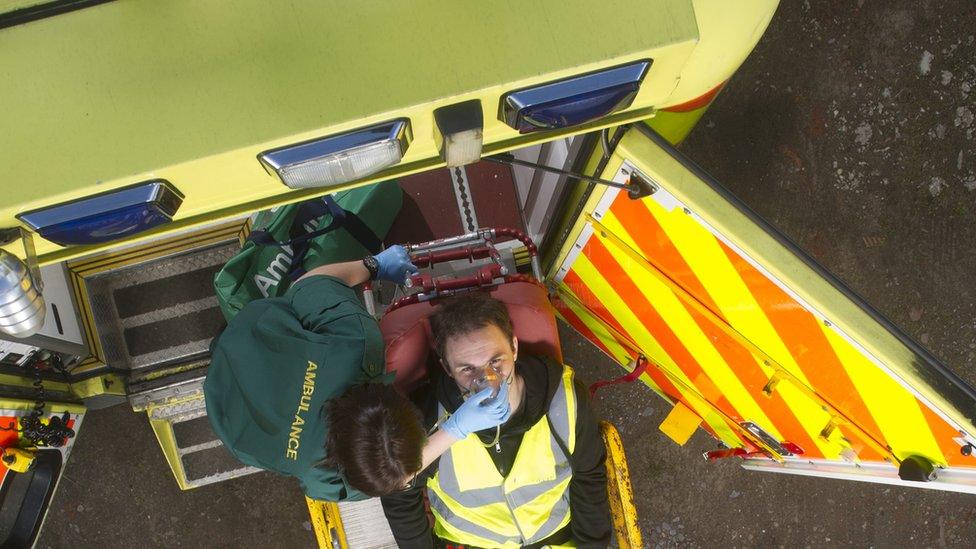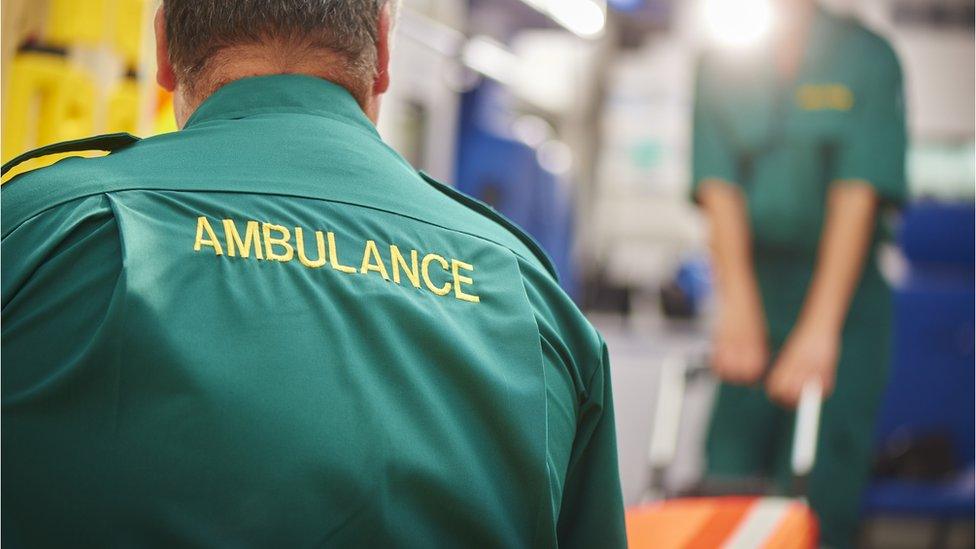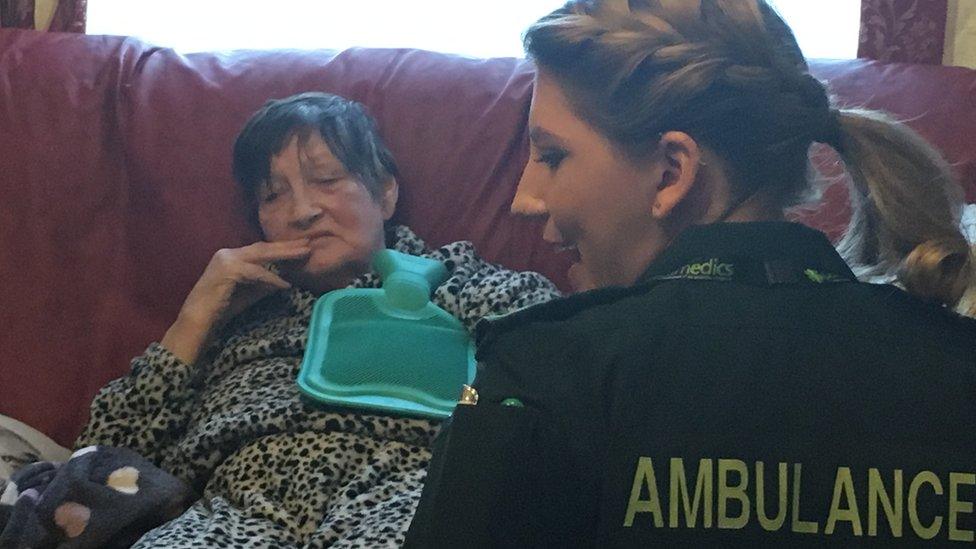Ambulance pressure: How are 999 calls categorised?
- Published

The ambulance services use a confusing array of terms to describe the calls they handle.
Depending on whether you are in Scotland, Northern Ireland, Wales or England, you will find different bandings being used.
But what does each mean and how many calls fall into each category?

The traditional category A model
This was how ambulance services across the UK described emergency calls for decades. It is still used in Northern Ireland and, until last week, was in place in Scotland.
It encompasses a wide range of calls, which could be said to be potentially life-threatening.
It includes conditions such as cardiac arrest and when a person has no pulse or is not breathing, all the way through to strokes, seizures and road traffic accidents.
About a third of calls in Northern Ireland fall into this category, which is subject to the eight-minute target.
The rest of the calls in this system are designated category B (serious but not life-threatening) which includes conditions such as fractures or category C (not serious) that are more likely to lead to a referral to another service or telephone advice being given rather than a face-to-face response.

Red, amber, green - the Welsh model
The Welsh ambulance service changed the way it started categorising calls in October 2015. Up to that point it was also using category A.
But it changed to a red, amber, green system. Red is the smallest group and includes conditions that are the most immediately life-threatening, such as cardiac arrest. These account for only one in 20 calls in Wales. This band is subject to the eight-minute target.
Amber includes life-threatening and serious calls, such as strokes and chest pains. These would have traditionally fallen into the old category A band. It also includes some of the conditions that would have been in the top end of category B, such as fractures. It is not subject to the eight-minute target.
Green are non-serious calls that are unlikely to need an ambulance response and instead can be dealt with by other health service or by the individual themselves.
Scotland has just introduced a similar system to this one.

Red 1 and 2
England was the first UK nation to move away from the category A model. It split the group into red 1 and red 2 in 2012.
Red 1 was a small band, incorporating cardiac arrests and other life-or-death conditions. It accounts for only 2% of calls and is subject to the eight-minute target.
Red 2 encompasses other serious and life-threatening cases, such as strokes and seizures. It accounts for 30% of calls and is subject to the eight-minute target. But unlike Red 1 calls, control rooms are allowed some time to assess these cases before the clock starts. It was one minute, but has just been increased to four.
The rest of the calls that require a response by the ambulance service are classed as green. There are no national targets to reach these, instead standards are set locally. A goal of 60 minutes is commonly used.
- Published30 November 2016

- Published30 November 2016

- Published29 November 2016

- Published30 November 2016

- Published30 November 2016